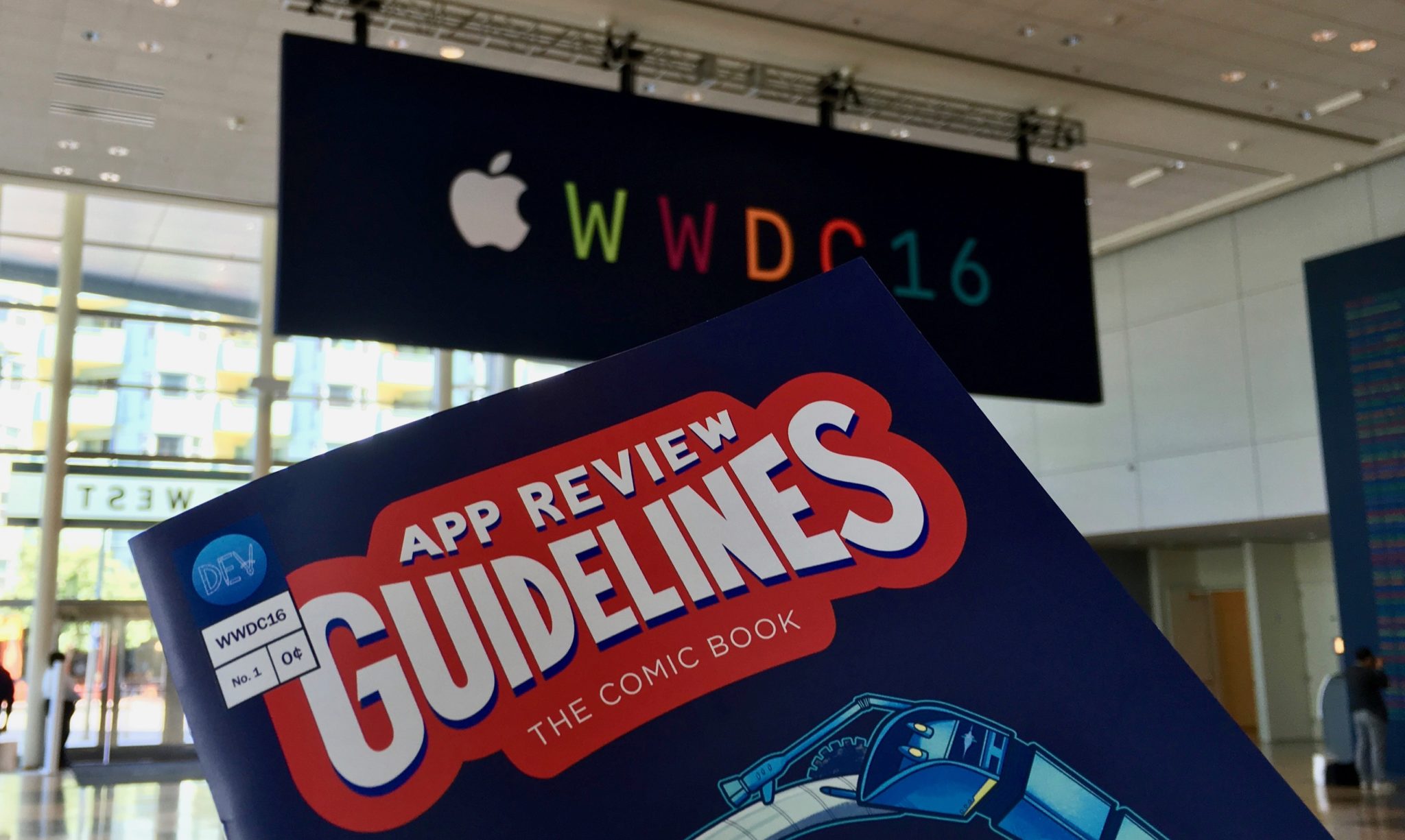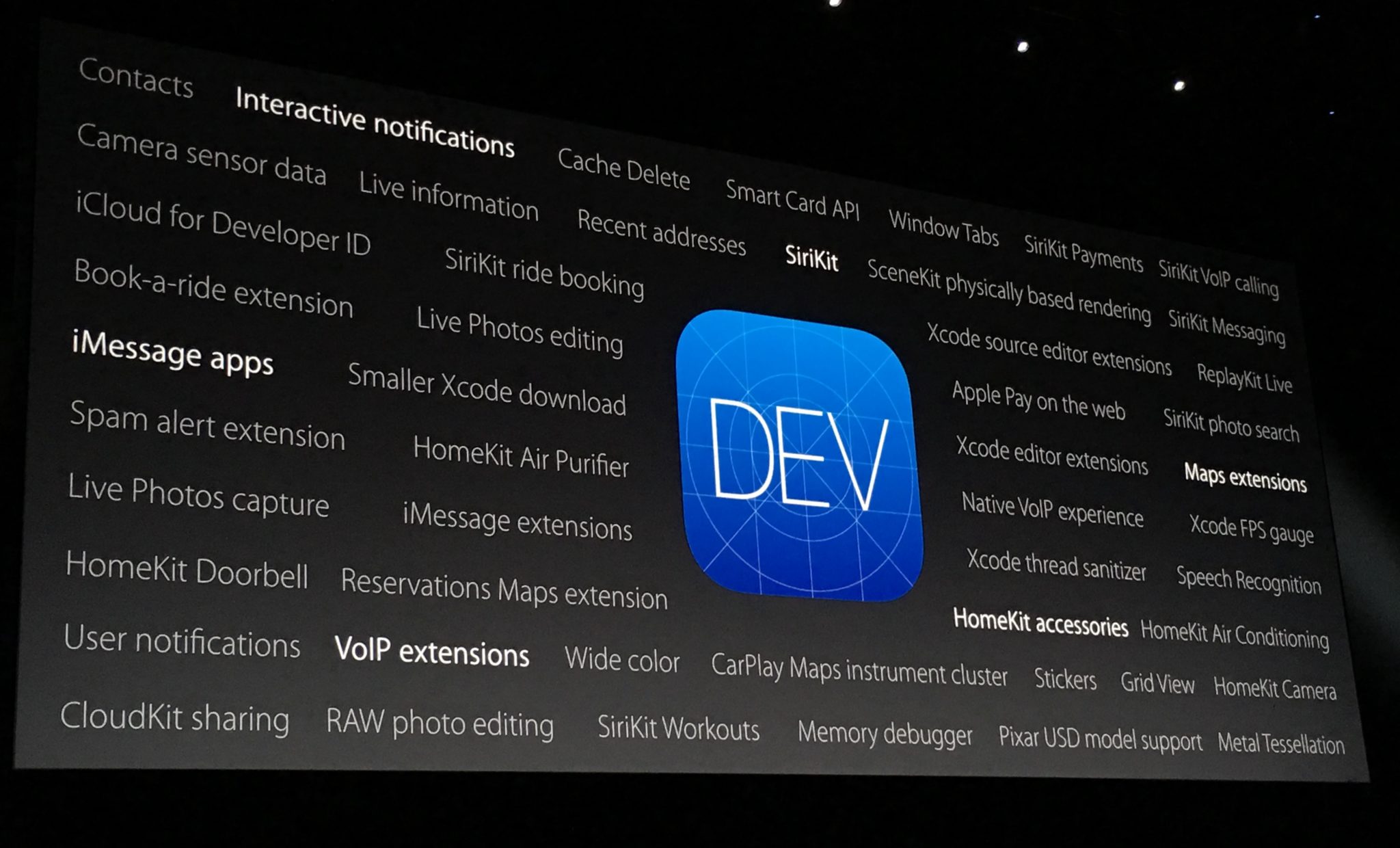[caption id="attachment_138521" align="aligncenter" width="3563"]

Apple App Store Guidelines Comic WWDC 2016.[/caption] Developers are starting to receive notices from Apple: iOS apps can’t be made from commercialized templates. The new rule came via an update to Apple’s App Review Guidelines in
August; rule 4.2.6 states: “Apps created from a commercialized template or app generation service will be rejected.”
At the time, we noted it would be difficult to know whether apps were created from templates. Apple’s notices don’t shed much light on its discovery process, either. Logically, a ‘diffing’ process would notify Apple’s in-house reviewers if a developer used previously known code and/or code styling. If you see the same
func across multiple apps, it’s probably some good old-fashioned copy-paste. One possible motive for Apple's rule is to dissuade ‘white label’ apps (easy-to-create apps that follow the same form and function as others in their field) from dominating the App Store. In the wake of Apple’s culling of 32-bit apps, the company seems more serious than ever about making sure the App Store is more marketplace than hosting repository. Bolstering that point is a second rejection notice being sent for rule 4.3, which dictates how apps should be designed; it also points to template designs in its rejection language. The one-two punch seems aimed at both user experience and interface templating. The apps have been given a deadline of January 1 to remedy the problem. This is curious for two reasons. First, it’s a pretty short timeframe should an app need to be widely re-written. Second, Apple’s reviewers shut down
between December 23-27, reducing the time even more. [caption id="attachment_139435" align="aligncenter" width="2962"]

Developers can make more on iOS[/caption]
What Apple is Really Saying
Congressman Ted Lieu (Democrat of California’s 33rd District, which covers Silicon Valley) has formally asked Apple to revisit this policy. From Lieu, in
a letter addressed to Apple CEO Tim Cook:
Recently, I was informed that Apple’s decision to more stringently enforce its policy guidelines regarding design and functionality may result in the wholesale rejection of template-based apps from the App Store. It is my understanding that many small businesses, research organizations, and religious institutions rely on template apps when they do not possess the resources to develop apps in-house. Understandably, Apple has a vested interest in ensuring its App Store is free from spam or otherwise illegitimate apps. I am concerned, however, that – in weeding out several bad actors – Apple may be casting too wide of a net and invalidating apps from longstanding and legitimate developers who pose no threat to the App Store’s integrity. I write to respectfully request that Apple examine possible changes to the aforementioned guidelines to ensure the nonfucntional or spam apps are barred from the store, yet trusted developers who create template apps are allowed to continue their productive partnership with Apple.
Lieu is asking that Apple examine bad actors, not bad apps. Unfortunately, that’s just not how the system is set up. Apple reviews what’s in front of it, not who made it – unless there are glaring issues such as suspect reviews. Lieu’s point may be underscored (or undermined) by a company named
Shoutem, which builds mobile apps. Speaking to
TechCrunch, Shoutem CEO Viktor Marohic says his company shut down a few weeks ago, though a small team is still on the payroll for existing client support. From TechCrunch:
“The 4.2.6 was just a final drop that made us move on a bit faster with that decision [to close],” he said of Shoutem’s closure. “It was also a threat to our enterprise business, since it is hard to predict what Apple might do next. While we understand their intentions, the general approach that they took turned out to be quite unfair to our enterprise customers that actually built fully custom apps on top of our platform and do not share much of the code with other apps built on the platform,” said Marohic.
Shoutem is the perfect example of what Apple is trying to avoid.
Anyone could create an iOS app from a series of template options before publishing to the App Store; the company was like Squarespace for apps. Such things might be client-friendly, but not consumer-friendly. As Apple moves to make its App Store a destination rather than a hosting platform, the Shoutems of the world suffer. Also suffering are the small businesses that want native apps, but can’t afford an in-house developer or expensive firm. A natural option is a DIY solution like Shoutem, but the new-look 4.2.6 and 4.3 rules also sideline overseas under-bidders that threaten honest, dedicated freelancers. One important caveat: these rules seem more geared toward consumer apps. IBM’s
template service, which is aimed at enterprise employees, doesn’t seem to fall under Apple’s gaze. It also doesn’t affect ‘normalized’ style choices (your favorite icon library is just fine) or APIs; developers can still make an app for a local Italian restaurant, and use Stripe or Square as a payment processor. Popular tooling you’d find in apps such as Sketch also appear to be unfazed. (This might also be a shadowy war
against React Native. Shoutem’s apps were created using the language.) For budding companies hoping their DIY app creation platform would take off, this is a bad sign. For developers who work hard to make great apps for good clients, and want more visibility without worrying about copycats and poorly made competitors, this new set of rules should be welcome.
 Apple App Store Guidelines Comic WWDC 2016.[/caption] Developers are starting to receive notices from Apple: iOS apps can’t be made from commercialized templates. The new rule came via an update to Apple’s App Review Guidelines in August; rule 4.2.6 states: “Apps created from a commercialized template or app generation service will be rejected.” At the time, we noted it would be difficult to know whether apps were created from templates. Apple’s notices don’t shed much light on its discovery process, either. Logically, a ‘diffing’ process would notify Apple’s in-house reviewers if a developer used previously known code and/or code styling. If you see the same
Apple App Store Guidelines Comic WWDC 2016.[/caption] Developers are starting to receive notices from Apple: iOS apps can’t be made from commercialized templates. The new rule came via an update to Apple’s App Review Guidelines in August; rule 4.2.6 states: “Apps created from a commercialized template or app generation service will be rejected.” At the time, we noted it would be difficult to know whether apps were created from templates. Apple’s notices don’t shed much light on its discovery process, either. Logically, a ‘diffing’ process would notify Apple’s in-house reviewers if a developer used previously known code and/or code styling. If you see the same  Developers can make more on iOS[/caption]
Developers can make more on iOS[/caption]



